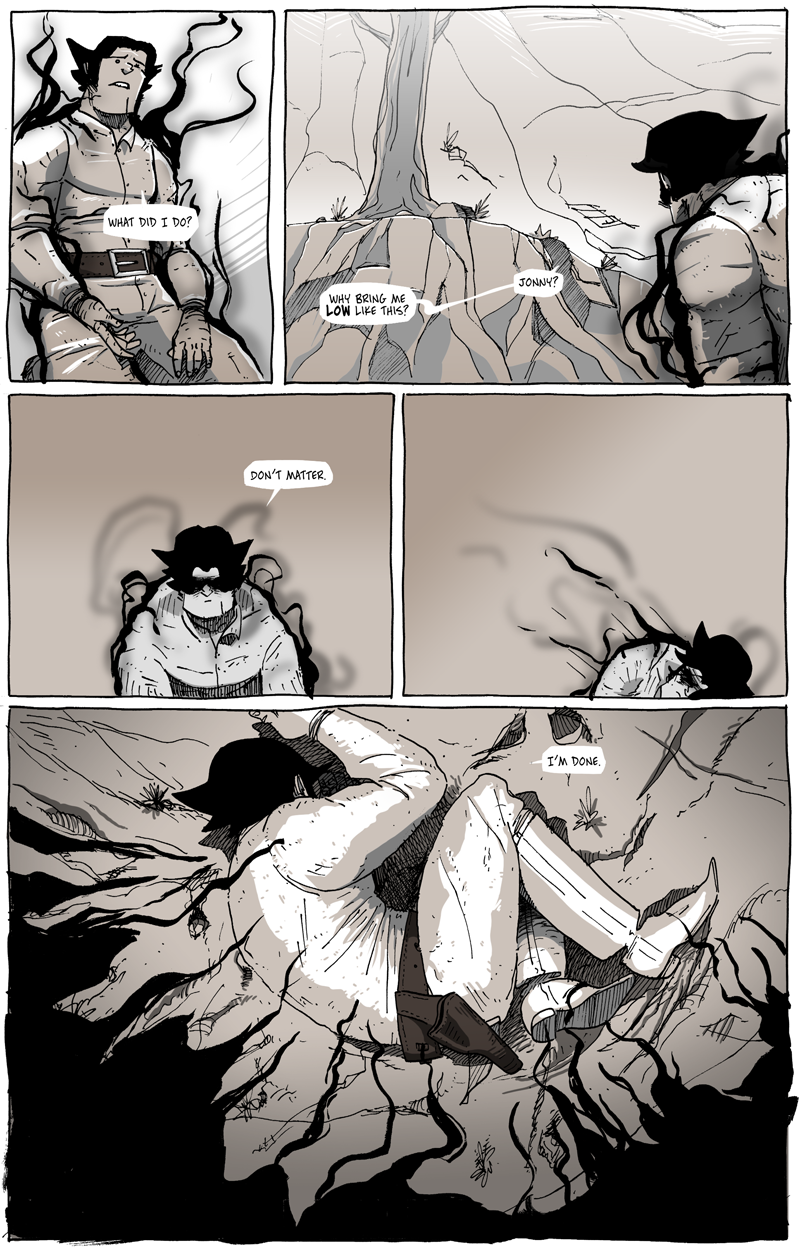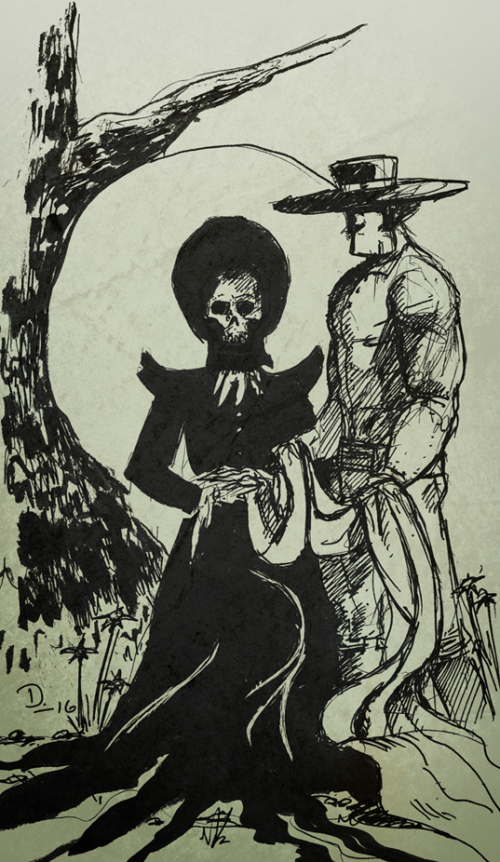Ultimately, a story is about a character making choices. With luck, a story is full of bad choices before the character gets around to making the right one. I specifically didn’t say the good choice, but the right one.
Long John lives in that muddy pool of choice; in fact, the story started at the culmination of him making a series of choices that––in conference with the own personal choices and needs of Juan John and Jonny Mono––caused him to be bushwhacked and abandoned in the middle of nowhere. So, the story is about him figuring out how to best recover from that situation and to deal with the choices that got him there.
The wrinkle in this whole thing is Hellrider Jackie. She makes choices with severe consequences. Murdering people is something, in theory, that Long John did before this story started, but with Jackie it’s different. It’s meaningful. It’s also deluded. And it’s made abundantly clear that there is a connection between Long John and Hellrider Jackie, made even clearer with Sketch Fridays #29.
Even though the creeping darkness is metaphorical, the threat they represent is completely real for Long John and, in a sense, for all of us at some point in our lives. This has been something I’ve been thinking about lately as I’ve been diving deeper into the characters and their motivations as well as my own goals for this story, incorporating some of the ideas for character analysis as presented by an acting teacher, Susan Batson in her book, Truth.
I first heard of this character analysis lens from a podcast, of all things, and not a podcast about acting. It’s through the comics news and analysis site, Comicsverse, a site I have come to quite appreciate and admire for the amount of thought and effort they put into every post they make. The same effort goes into their podcasts, which are usually analyses of specific stories from popular (and independent) comics. The founder of the site, Justin Alba, is a huge X-Men fan––which immediately earned my attention––and he proves it through the amazing X-Men podcasts they have done so far.
It was in these episodes where Justin and his co-hosts took time to analyze some key characters from the story in review using Batson’s three main pillars for character creation: public persona, personal needs, and tragic flaw.
Of course, these are all terms and critical lenses with which I’m quite familiar, but creating a triumvirate around them creates a very fun and surprisingly focused approach to character that has me going over all of my characters again and honing them. It’s fascinating to take a new and deeper look into these characters that I’ve been taking apart and building up for years––some for over a decade––and to see them looking shiny and fresh again. I could have avoided it, doing new analyses could throw all the preexisting hard work into the air and muddle everything I’ve been working toward. But it was a choice. Perhaps not a good one, but definitely the right one.




Discussion ¬